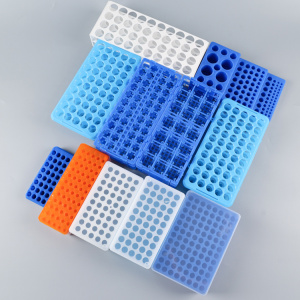How to choose cell culture flask?
The selection of the type of culture flask is usually based on experimental needs and personal habits.
The height of the wide-body culture flask is reduced, which helps to save space in the incubator. The bottle neck located in the corner allows the dosing operation to reach the corner of the flask directly.
Erlenmeyer flasks and modified Erlenmeyer flasks facilitate pipettes and cell scrapers reaching the corners of the flask. The wider bottom provides better stability.
Right-angle flasks have a slope from the bottom to the torticollis for easier pouring and pipette access. Most torches also have an anti-slip skirt for added stability.
Angle-neck flasks and traditional straight-neck flasks fully utilize the entire bottom area for cell growth. This design saves space and reduces media splattering to the neck.

Cell culture bottlenecks are roughly divided into three types
Straight neck flasks are ideal for larger volumes of media as this design reduces spillage of media into the cap.
Tortoise flasks are easier to pour and improve the maneuverability of the flasks when adding samples or scraping.
Angled neck improves pipette maneuverability and reduces spillage of media onto the neck.

The choice of bottle cap plays an important role in the tightness of the cell culture flask.
The sealing cap features a one-piece, linerless construction, designed for use in closed systems, with a seal that prevents leakage of liquids and gases. When unscrewed, this cap type can also be used in open systems.
Polyester caps are designed (when unscrewed) for use in open systems that require gas exchange. When the cap is slightly loosened, gas can be exchanged between the inner and outer environment of the culture bottle.
The breathable cap contains a 0.2 micron pore size moisture barrier film to seal the cap, providing continuous and sterile gas exchange while minimizing the risk of contamination. This cap type is highly recommended for use in all CO2 incubators, especially for long-term use.
The septum cap maintains a closed sterile environment within the incubator. This septum allows the use of a blunt cannula to add or remove cell and solution while reducing the chance of contamination. The septum is pre-cut to prevent the septum from being drilled by the cannula. It is also possible to remove the cap and pipette (up to 5 ml) or assist in the receipt of cells. This cap type has been verified several times.



